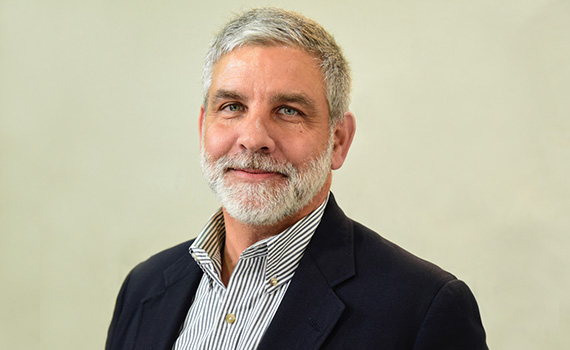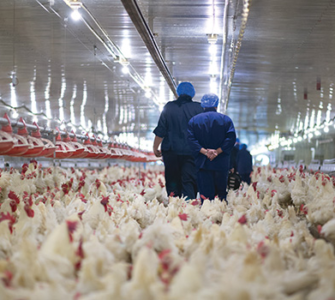Antibiotic issues broaden poultry veterinarians’ role
By Philip A. Stayer, DVM, MS, ACPV
Corporate Veterinarian
Sanderson Farms, Inc.
All large US commercial broiler producers have their own specialty-licensed veterinarians on staff or on contract, some with fewer flocks per veterinarian and some with more.
For example, my employer, Sanderson Farms, is the third largest broiler producer in the US. It employs five veterinarians, three of whom work with live production. The other two oversee food safety. All five of us have responsibilities for flocks ranging from Texas to North Carolina. In addition, my colleagues and I have seen our roles broaden in response to issues of the day, particularly defending the use of antibiotics in our flocks.
Whether poultry veterinarians are in private practice or commercial food-animal production, they must balance the wishes of their clients with the needs of their patients. Flock owners have constraints that are usually financial and sometimes philosophical, which may limit what their veterinarians can do.
A most graphic recent example is the “raised without antibiotics” policy at several US commercial poultry companies. Poultry veterinarians tend to be well-informed about the scientific veracity of prudent antibiotic use in chicken flocks, but sometimes marketing goals force veterinarians to withhold the best available treatments. Fortunately, upper management at our company supports the prudent and judicious use of antibiotics when indicated, a position our veterinary team believes enables us to provide the best possible care to our flocks.
Nevertheless, the “raised without antibiotics” marketing trend initiated by other US broiler producers has affected us here at Sanderson. We’ve increasingly become involved in “veterinary marketing,” and my guess is that veterinarians at other companies are having the same experience. When poultry-company customers can’t address live-production issues themselves, they turn to the poultry company’s sales and marketing personnel, who in turn engage their veterinary team.
Justifications
Not surprisingly, the most lucid example of a question we get nowadays is “Why do you use antibiotics in your flocks?” In response to this question, we’ve developed a three-legged stool to explain the judicious use of antibiotics.
The first leg is to take care of animals. If there are FDA-approved treatments for particular diseases, then we should use those products to treat sick birds, regardless of how it affects their marketability.
The second leg is based on work by the late Scott Russell, PhD, who demonstrated that sick chickens have increased levels of foodborne pathogens.1 We therefore treat flocks for the benefit of consumer food safety.
The third leg focuses on “sustainability” — the vernacular of the day. It’s widely known that sick animals left untreated either die or they require more feed, water, farms, labor, etc. to reach market weight. Obviously, nobody uses antibiotics simply to spend money, and neither do we!
We were once asked by a customer to address questions raised by an anti-agricultural, anti-food-animal production special-interest group. Our senior management, marketing and veterinarian departments engaged the group’s spokesperson and its paid consultant, who has spent an entire professional career raising potential issues that might reflect poorly on modern, high-tech animal agriculture.
Our veterinarians stood on scientific principle to counter the “what ifs” and “maybes” suggested by the consultant. The customer wisely did not succumb to the pressure of this special-interest group and instead backed our position, which is clearly aimed at caring for animals, consumers and the environment.
Customer and consumer engagement
Our live-production veterinarians have spoken about antibiotic issues at numerous customer association meetings in the US and abroad. Most other poultry producers and customers applaud our position that FDA-approved compounds should be used to alleviate poultry suffering. During these meetings, questions are inevitably raised about public misconceptions regarding antibiotic use in poultry production, but it’s interesting to me that no one voices concern about a lack of consumer acceptance for conventionally raised food animals. All retailers like to offer their shoppers options but realize that conventionally raised poultry costs less and sells better than poultry with non-conventional labels.
From time to time, individual consumers contact our company regarding our policies. Usually our marketing personnel, who are well versed about poultry issues, handle these inquiries. However, in the fall of 2015, our live-production veterinarians participated in an initiative to educate food bloggers about conventional, commercial poultry production. All the blogger participants praised the tour and gained new awareness about the care given to commercial poultry. None of them suggested that we should withhold antibiotics after they learned about the veterinary involvement that goes into caring for commercial flocks.
Animal welfare
Interestingly, some of the same groups who lambast modern farm technology also think animal welfare needs to be improved. Animal welfare has always been integral to animal husbandry, but over the last 10 years or so, it has emerged as a distinct item. Veterinarians are uniquely qualified to address animal well-being because we are trained to understand the interaction between behavior and physiology.
Our veterinarians, as well as veterinarians from other poultry companies, stay involved with the American Association of Avian Pathologists’ Animal Welfare Committee. Many of us personally instruct live-production personnel on animal welfare to help ensure superior flock care. We help train new poultry veterinarians. At Sanderson, we also believe in sharing what we learn from our day-to-day experience with others in the poultry industry since all poultry producers do better when the entire US commercial flock is disease free.
It’s clear that poultry-company veterinarians play pivotal roles in our organizations and that our roles have expanded in response to the issues of the day. Our training, experience, contacts, continuing education and daily work enable us to be reliable resources for upper management and to provide an invaluable resource to our customers and to consumers. For our veterinary team, that includes proudly taking a stand on the use of modern technology — including the administration of approved antibiotics when indicated — to care for flocks.
Editor’s note: The opinions and advice presented in this article belong to the author and, as such, are presented here as points of view, not specific recommendations by Poultry Health Today.
1 Russell SM. The Effect of Airsacculitis on Bird Weights, Uniformity, Fecal Contamination, Processing Errors, and Populations of Campylobacter spp. and Escherichia coli. Poult Sci. 2003;82:1326–1331
Posted on April 18, 2017
















